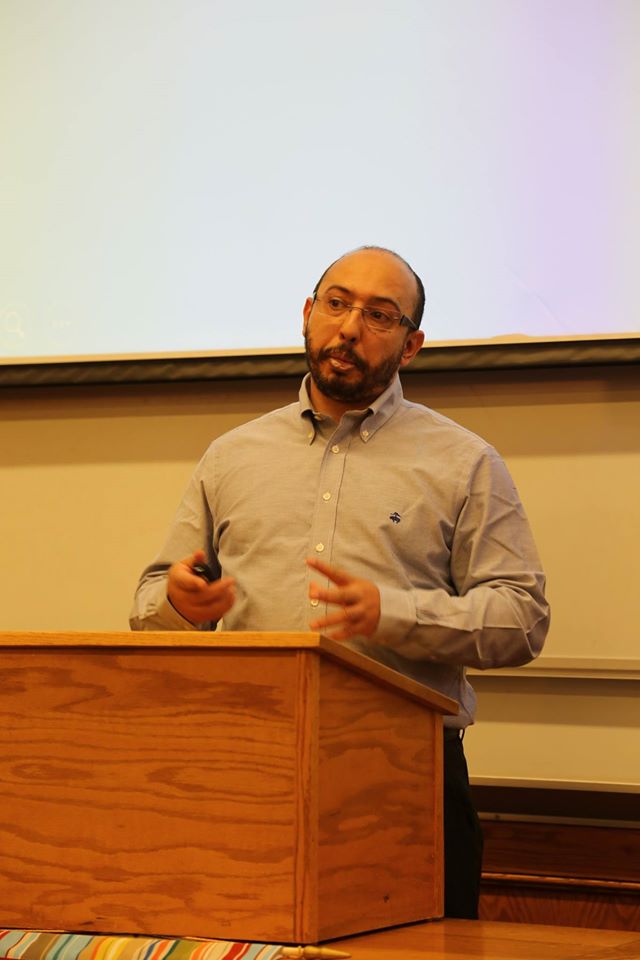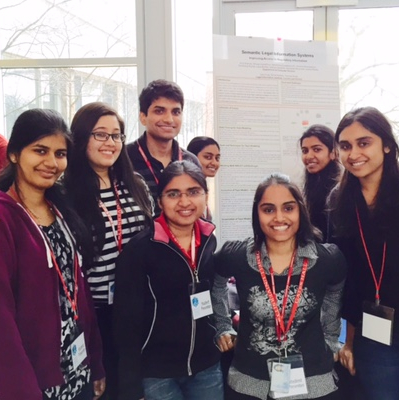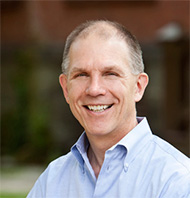 She’s baaaack! Former LII employee Sylvia Kwakye recently returned to Ithaca, and we are lucky to add her to our staff as a Text Systems Developer. “I practice the dark arts of data mining and natural language processing to transform dry legal texts into attractive, easier to relate to but accurate reflections of themselves,” she explains.
She’s baaaack! Former LII employee Sylvia Kwakye recently returned to Ithaca, and we are lucky to add her to our staff as a Text Systems Developer. “I practice the dark arts of data mining and natural language processing to transform dry legal texts into attractive, easier to relate to but accurate reflections of themselves,” she explains.
Sylvia worked for the LII years ago while studying for her PhD in Biological and Environmental Engineering at Cornell.
“I took Computer Science 501 as part of my Computer Science minor,” she says. “In this class we were asked to do a project, and given a list of Cornell groups that had problems to solve. I was always interested in doing something real and useful, so I chose the LII. I was interested enough to ask to continue working when the class was over.”
As LII Director Tom Bruce recalls it, “Sylvia thought it would be fun to work on the U.S. Code with us.” Since the U.S. Code project was complex and difficult to create, it’s clear that Sylvia finds her “fun” in taking on complicated problems.
Once again, she’s working with the U.S. Code–now as a full-time member of the LII staff. One of Sylvia’s noteworthy projects is adding definitions of key terms. For example, there are 47 different uses of the word “water” in the U.S. Code. Sylvia is developing a system that will display the correct definition each time the word appears.
Sylvia comes from Ghana, but spent most of her first eight years in the U.S. Her father studied at the University of Chicago. When the family returned to Ghana, he worked for several agencies and the University of Ghana. “We moved around, but mostly lived in Accra, the capital. We spent school vacations in the villages with our grandparents.”
Stories of the University of Chicago led Sylvia to apply there. “Initially, I wanted to be a doctor, and I got into medical school in Ghana,” she recalls. “But Dad loved liberal arts education, and said, go to a liberal arts school and then do medical school afterwards if that’s what you still want.” Stories of the University of Chicago led Sylvia to apply there. She also applied to Swarthmore, which offered her a scholarship. Ultimately, she chose Swarthmore.
Engineering seemed like a good pre-med degree. However, computational biology was becoming better known, “and I just happened to be in a position to understand both biology and engineering,” says Sylvia.
After graduating from Swarthmore in 1998 with a BS in Engineering, she worked as a research engineer with the Computational Biology Group at the Dupont Experimental Station in Wilmington, Delaware. There, she says, “I got interested in writing and using software to make life easier.”
“We were trying to understand what protein switches turn genes on and off as a plant grew,” she says. “A microarray is a tray with 96 wells , so you could do 96 DNA tests at a time. So, you quickly end up with thousands of data points to analyze. That’s where all the computer science courses I had taken for fun at Swarthmore College came to the rescue. I wrote software tools to reduce months of analysis work to a matter of hours. From then it’s been routine for me to learn programming to help me get work done.”
For her PhD work at Cornell, she developed a system for rapidly detecting pathogens for use in low-resource communities: that is, a small, portable box that would test for the dengue fever virus, among other things.
After receiving her PhD in 2010, Sylvia teamed up with a graduate of Cornell’s Johnson Graduate School of Management and a professor at Case Western Reserve University to develop her detection system into a commercially viable product. Unfortunately, they ran out of resources. “Because we were such a small team, major life changing events had quite an impact on our abilities to carry on,” Sylvia says. Those events included the death of her father, which required her to spend time in Ghana settling the estate.
Meanwhile, her husband Stefan continued studying for his PhD at Cornell, while his mother came from Trinidad to help with their two children, now aged nine and eight. Stefan has since completed his degree, works in the renewable energy industry, has a consulting job, and also writes software for fun.
When Sylvia returned to Ithaca, the LII was delighted to bring her back onboard. In addition to her primary responsibilities engineering improvements to the website, she’s also helping Sara Frug, LII’s Associate Director for Technology, to mentor Master of Engineering students who are working on projects for the LII. “I was just like them,” Sylvia recalls. “I had the same anxiety about getting it right!”
Talking with Sylvia, however, you don’t see anxiety about getting things right; only the enjoyment she takes in solving complicated problems.
 Last time, we mentioned a Cornell visit by Tarik Nesh-Nash, a prominent advocate for citizen participation in governmental process who has done important work in Morocco, Libya, and Egypt. Tarik’s past projects include a platform for citizen participation in the drafting of the new Moroccan constitution, and websites that promote transparency in government spending and offer citizens opportunities to report and combat official corruption. We first met Tarik at the Law via the Internet conference in Hong Kong in 2011, and have followed his work with great interest ever since.
Last time, we mentioned a Cornell visit by Tarik Nesh-Nash, a prominent advocate for citizen participation in governmental process who has done important work in Morocco, Libya, and Egypt. Tarik’s past projects include a platform for citizen participation in the drafting of the new Moroccan constitution, and websites that promote transparency in government spending and offer citizens opportunities to report and combat official corruption. We first met Tarik at the Law via the Internet conference in Hong Kong in 2011, and have followed his work with great interest ever since.




